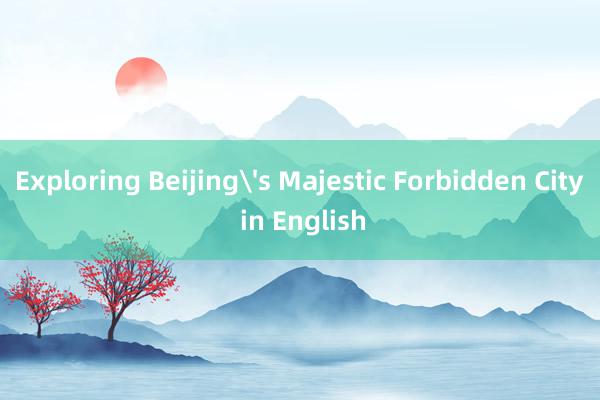
**Exploring Beijing's Majestic Forbidden City**
Nestled in the heart of Beijing lies one of the most iconic landmarks of China: the Forbidden City. This ancient imperial palace, known in Chinese as the "Purple Forbidden City" or Zijin Cheng (紫禁城), has been standing since the early 15th century. It served as the imperial palace for the Ming and Qing dynasties until the end of the monarchy in 1912. Today, it stands as a UNESCO World Heritage Site and is one of the largest and best-preserved wooden structures in the world.
宁波优耐特进出口有限公司Entering through the Meridian Gate (Wu Men), visitors are immediately struck by the grandeur of the complex. The Forbidden City spans over 720,000 square meters and consists of more than 800 buildings and nearly 9,000 rooms. The layout of the city is meticulously planned according to traditional Chinese Feng Shui principles, with the central axis running north-south, symbolizing the balance between heaven and earth.
One of the most impressive structures within the Forbidden City is the Hall of Supreme Harmony (Taihe Dian). This hall was where the emperor held major ceremonies and important state events. Its grandeur is evident from its imposing size and the intricate dragon carvings that decorate its beams and pillars. Adjacent to this hall is the Hall of Central Harmony (Zhonghe Dian), which was used for smaller ceremonies and as a resting place for the emperor before larger events.
Walking through the Forbidden City, visitors can also explore the Palace of Earthly Tranquility (Kunning Gong), 潍坊泵阀商务网-泵阀网、泵阀行业电子商务 which was the residence of the empress. This building is unique for its distinctively simple design compared to the other halls, 小户型大创意 蜗居装修指南_装饰榜_中国装饰领先门户网站 reflecting Confucian ideals of modesty and simplicity. Another notable structure is the Imperial Garden,武汉博流科技有限公司 a serene oasis within the bustling palace grounds. Here, visitors can find a variety of trees, flowers,武汉九达合有限公司 and pavilions, providing a peaceful retreat from the crowds.
The Forbidden City is not just a historical site but also a living museum, housing an extensive collection of artifacts, artworks, and treasures from the imperial era. These include ceramics, jade carvings, paintings, and calligraphy, offering a glimpse into the rich cultural heritage of China.
Visiting the Forbidden City is an immersive experience that offers a deep dive into China's imperial past. Each structure武汉九达合有限公司, each artifact, and each garden tells a story of power, artistry, and cultural evolution. Whether you are a history enthusiast, an architecture lover, or simply someone curious about the world's diverse cultures, the Forbidden City promises an unforgettable journey through time and tradition.